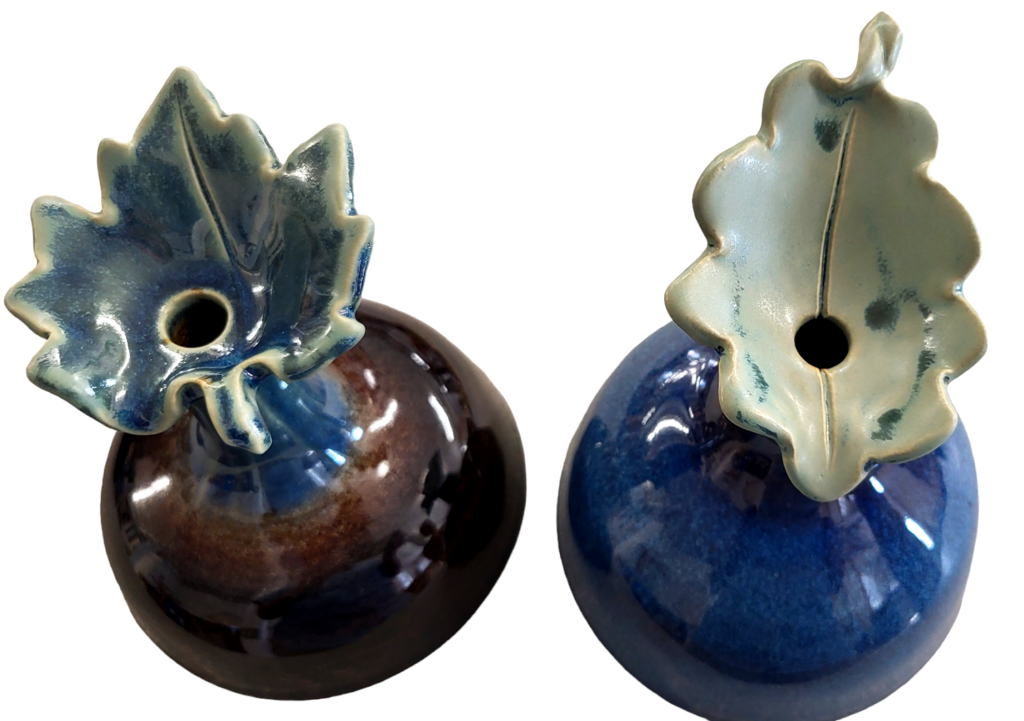


Glazes are made completely from raw minerals which come from the ground. Feldspar, Talc, Cornwall Stone, Silica, Gertsley Borate – these are just a few of the thirty or so minerals used at Thirstycats to make our glazes. All minerals are mined – taken from veins or deposits and those veins and deposits can and often do vary in their composition.
The people who purify those minerals and turn them into a form needed by potters try to normalize them but variations do still arise. Some mineral deposits run out – there is no more being mined, and in that case a complete substitute needs to be found. This has happened several times in recent years and suitable substitutes were found for two of them. A couple of our glazes had to be discontinued because what was supposed to be the substitute for a particular mineral we used, did not give what we needed.
Colorants, such as Cobalt Oxide, Copper Carbonate, Red Iron Oxide, Chrome and others are also mined minerals without which we couldn’t make our beautiful colors such as our blues, greens and Mahogany and these too are subject to change, though as mentioned, the processors have specific chemical analyses they try to adhere to. Additionally, since such relatively small amounts are used, their slight variations don’t have as much effect.

Another factor which will affect the glaze is the application. A heavier application will not look the same as a light application. Some glazes are more affected by this than others. Our Pearl, Hunter Yellow and Jade glazes for example look considerably different in different applications and we use this factor intentionally to create variations. They all look good – but are different.
And yet another (the last) factor which can affect glaze color is temperature. All our glaze firings are done according to a firing schedule and all fire to the same temperature but inside the kiln that temperature can vary and have different effects, according to the number of pieces in the kiln, where in the kiln the particular piece is placed and even by what other pieces are next to it.
To compensate for this (and for other reasons), we have a ‘hold time’ built into the firing program with which once maximum temperature is reached, the kiln holds at that temperature for a set period of time. This allows the temperature to even out throughout the kiln.
Nevertheless, variations will sometimes occurr as the image below shows. Even without the texture differences in the clay these are distinctly different colors and glaze textures. The glaze on the right is more satiny and more of a cream color with gold higlights and on the left it is glossier and yellower.

A more tightly packed kiln, compared to a more loosely packed kiln – this can change the results.
This is why we always send the customer pictures of any finished fountain for a custom order. No one wants to be surprised by an unexpected color when something specific was requested. If it happens that the customer isn’t happy with the resultant fountain we do it again, attempting to remove or alter the variable that caused the difference. We don’t often achieve perfection. We do always strive for it and try to give you what you want.
Even when used on the same clay, fired to the same temperature in the same kiln. We almost always state the names of the glazes we use in the fountain listings and of course you will expect that color to be what you get if you request that glaze. And it usually will be, but not always. Glazes can vary depending on several factors.
The four center pieces shown here were glazed at the same time, with the same glaze on the top portion, applied in the same way (spraying). placed on the same shelf of the same kiln in the same firing.
From top to bottom and left to right they are the waterlily leaf, oak leaf, the pagoda and the Maple. Notice the oak leaf, top right. It is matt and lighter green, the others are all glossy and darker. Why? We don’t even know for sure but it is possible that though the exact technique was used for each, that piece might have been given a slightly lighter coat. It might also have been in a slighter hotter spot in the kiln and some of the colorants burned out.
Most people would be amazed at the number of possible anomanies ceramicists deal with daily.